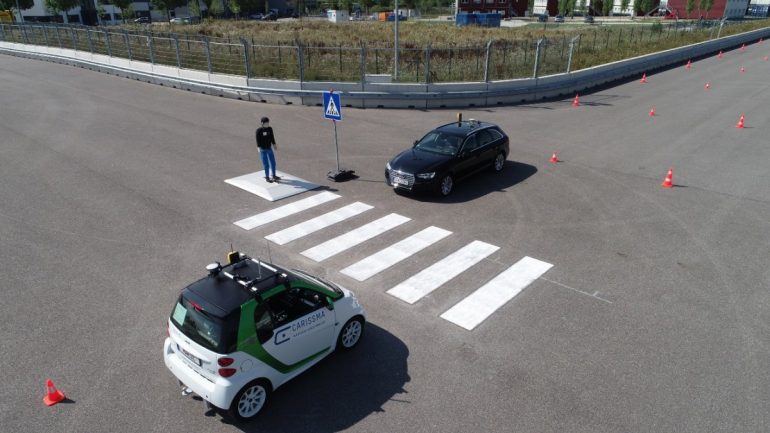year 2035. Humanoid robots have become an integral part of everyday life. But one robot is suddenly out of line: Sony is the only one that hasn’t received a software update — and therefore isn’t controlled by artificial intelligence that seeks to subjugate people.
Sure: The movie “I, Robot” shows an exaggerated dystopia. But how likely are fully autonomous artificial intelligence (AI) technologies? A look at current research may disappoint Bavarian science fiction fans. The state government is looking to invest 360 million euros to make the Free State a leading AI space.
But on the one hand the US and China in particular have taken their stand in this area, billions are being invested there. On the other hand, most of the research projects in this country are related to so called weak AI. Unlike “strong AI” – the evolution of human-like intelligence – it’s about algorithms that are supposed to make life easier in small, precisely defined areas. The Free State’s three current research projects show what the future might look like.
AI against cancer
How can AI help improve colon cancer diagnosis? This question is based on the research team surrounding Ute Schmid, who works as a professor of cognitive systems at the University of Bamberg. To simplify matters, the AI is fed with a large amount of tissue samples. Using this data and machine learning, AI tries to detect abnormalities that may indicate cancer. In turn, models can be developed that can support cancer diagnosis. Here’s a challenge: eliminating sources of error from models that inadvertently creep in with vast amounts of data. The big advantage: At the end of the day, medical professionals see not only where a tumor is located from an AI point of view, but also whether it has already penetrated other tissue layers. Even more: AI combines visual explanations – such as images of tumor tissue – and verbal explanations. So she suggests diagnosis. The doctor can then request clarification from the AI and correct the diagnosis if necessary. The constant back and forth between humans and AI makes colorectal cancer analysis more accurate. Schmid’s project ends at the end of the year. Your interim conclusion: An evolving approach to explanatory and interactive machine learning. However, more research is needed before it can be used in practice.
conquest of space
In the spring of 2024, the Sonate-2 satellite is to be launched into orbit with the launcher and will remain there for a year. In a sense: Hakan Kayal, a professor of space technology at Würzburg and his team – although it is not entirely clear what they have helped develop further artificial intelligence. “Most satellites in space already specialize in known phenomena. Sonata-2, on the other hand, should be able to discover unknowns, such as new impact craters caused by meteors,” Kayle says. So can AI track aliens too? It is theoretically possible, even if it is not the aim of the researchers. For them, it is more or less ready for the AI space. Traveling through space generates a lot of data, but sending it to Earth always feels like an eternity. That’s why many satellites are equipped with artificial intelligence. What’s new at Würzburg: Your satellite AI is trained with the help of data while traveling not only on Earth, but in space. AI can learn and analyze independently on satellite. One of the goals of Kayal’s team is an interplanetary mission. The Federal Ministry of Economics is funding the project with 2.6 million euros.
for safe roads
Cars that recognize dangers before humans – and those that brake and counter-steer first: Autonomous driving has long been teased as well to reduce the number of road deaths. But how can this decision-making process of AI be tested to show that it actually makes road traffic safer? Michael Bosch, a professor at the Technical University of Ingolstadt, and two colleagues took over the task in 2017. The project is being financed by Audi. Simply put, Bosch is concerned with how self-driving cars react in simulated traffic situations – and why they react that way. So the behavior of the AI should become more or less detectable. An example: A vehicle in front suddenly applies the brakes. AI records the situation with the help of sensors installed in the car. Then comes his explanation: what traffic objects are affected by emergency braking, what consequences does it have for its own vehicle, how might other road users react? Once the AI has found the answer, the maneuver is planned – that is, the actual reaction to avoid a crash. In this instance it could also be an emergency stop. Research work will continue until the autumn, but Bosch is certain that work on autonomous driving is just getting started. Like the German Ethics Council, it would be unethical to abandon the use of AI if there are fewer people killed in traffic.

Web guru. Amateur thinker. Unapologetic problem solver. Zombie expert. Hipster-friendly travel geek. Social mediaholic.





